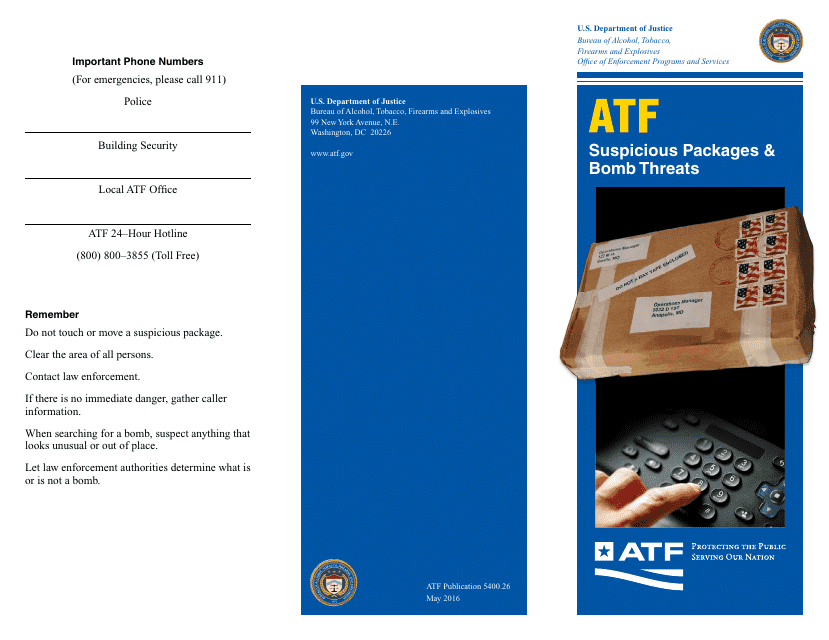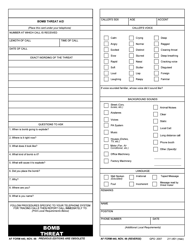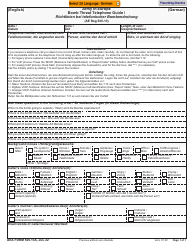Suspicious Packages & Bomb Threats
Suspicious Packages & Bomb Threats refers to the prevention and response protocols established by law enforcement and security agencies to deal with potential threats to public safety. These procedures are designed to detect, identify and appropriately respond to objects, packages, or communications that seem suspicious or have been explicitly identified as a threat.
In the context of documents, this can pertain to guidelines or materials that educate and inform individuals about how to recognize and respond to suspicious packages or bomb threats. This includes recognizing signs of potential danger, measures to take upon identifying a threat, and steps to ensure personal and public safety. These documents may be found in various environments such as the workplace, schools, public transportation hubs, and more.
Such materials can be invaluable in times of threats, aiming to reduce panic, ensure orderly conduct, improve coordination between individuals and law enforcement, and ultimately save lives. The protocols can vary by country, state, or organization and are often revised based on evolving threat perceptions and advancements in safety measures.
FAQ
Q: What is a suspicious package?
A: A suspicious package is any parcel or container that arouses suspicion due to its unusual characteristics, such as unknown origins, strange odors, leaks, excessive postage, poor handwriting, excess packaging material, or noises coming from the parcel. It may also be addressed to someone who no longer works at the location.
Q: What should I do if I find a suspicious package or parcel?
A: If you find a suspicious package or parcel, you should not touch or move it. Immediately inform your local law enforcement agency, and avoid the area until they arrive. Do not use cell phones or radios near the suspicious package as these could potentially set off an explosive device.
Q: How are bomb threats usually received?
A: Bomb threats are usually received via phone, but they can also be sent through mail, email, social media, or delivered verbally. They may be direct, indirect, or coded messages.
Q: What to do during a bomb threat?
A: If you receive a bomb threat, note the caller's details and message as accurately as possible. Contact your local law enforcement immediately and follow their advice. Evacuate the building if advised to do so, always using the stairs instead of the elevators.
Q: What should I do after a bomb threat?
A: After a bomb threat, inform your immediate supervisor and follow your organization's security protocols. It's important to await instructions from law enforcement officials and not attempt to return to the building until they declare it safe.
Q: How does law enforcement respond to a bomb threat?
A: Law enforcement responds to a bomb threat by isolating the area, gathering information, conducting searches, providing guidance on the need to evacuate, and working towards identifying and arresting the perpetrator.
Q: What precautions should one take to prevent bomb threats or incidents?
A: To prevent bomb threats or incidents, maintain high levels of security awareness, report suspicious behavior or objects in your workplace or community, regularly check your mail and premises, and ensure your place of work has an up-to-date security protocol.
Q: How can you identify a bomb threat email?
A: A bomb threat email can often be identified by threats contained in the text, unknown sender, generic language instead of specific targets, and demanding for specific actions to avoid the threat. However, any suspicious email should be reported immediately to the authorities.






